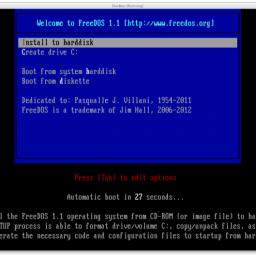
A
phase-changing material could be used in low-cost robots to allow them to switch between hard and soft states. The material is made from a flexible open-cell foam coated in wax that can achieve significant ranges of stiffness, strength, and volume [
Abstract].
The material - developed by Anette Hosoi, a professor of mechanical engineering and applied mathematics at MIT, and her former graduate student Nadia Cheng, alongside researchers at the Max Planck Institute for Dynamics and Self-Organization and Stony Brook University - could be used to build deformable surgical robots. The robots could move through the body to reach a particular point without damaging any of the organs or vessels along the way.
Robots built from the material, which is described in a new paper in the journal Macromolecular Materials and Engineering, could also be used in search-and-rescue operations to squeeze through rubble looking for survivors, Hosoi says.
To build a material capable of shifting between squishy and rigid states, the researchers coated a foam structure in wax. They chose foam because it can be squeezed into a small fraction of its normal size, but once released will bounce back to its original shape.
The wax coating, meanwhile, can change from a hard outer shell to a soft, pliable surface with moderate heating. This could be done by running a wire along each of the coated foam struts and then applying a current to heat up and melt the surrounding wax. Turning off the current again would allow the material to cool down and return to its rigid state.
In addition to switching the material to its soft state, heating the wax in this way would also repair any damage sustained, Hosoi says. "This material is self-healing," she says. "So if you push it too far and fracture the coating, you can heat it and then cool it, and the structure returns to its original configuration."

Who cares that it's 20 years old:
FreeDOS is still around, fulfilling an interesting and valuable role in the world of tech, and what's more, is ardently supported and appreciated by a loyal core of users and developers. Sean Gallagher over at Ars Technica interviews the FreeDOS lead developer, Jim Hall, to find out why FreeDOS still fills a niche:
Because FreeDOS is, as some have called it, "barely an operating system," it allows developers to get very, very close to the hardware. Most modern operating systems have been built specifically to avoid this for security and stability reasons. But FreeDOS has become much more friendly to virtualization and hardware emulation-it's even the heart of the DOSEMU emulator
The direction the project has taken hasn't exactly followed the road map Hall envisioned after version 1.0. He once had ambitious plans for a next-generation of DOS, originally envisioning a modern FreeDOS along the lines of an alternative history of computing. "For a while, I was thinking, 'If MS DOS survived, where would DOS have gone in the last 10 to 15 years?'" Hall said. "I was advocating some sort of multitasking-we could have task switching like what was supported in the 286, where you can put one process to sleep while you do another process. I wanted to have TCP/IP added to kernel."
FreeDOS might hail from the era before networking but it's inherently real-time, provides a great teaching tool that allows you to get close to the bare metal, and remains deliciously uncomplicated.
That's also the opinion of Gallagher, who spent a whole day {gasp!} running DOS just to remember what it's like. Now get offa my lawn.

At its core, it's a question of quantity versus quality, or the right to access information. But it's also a question about the role humans should play in an ostensibly human-edited encyclopedia. Here not to provoke those questions but simply to add information to
Wikipedia is a Swede by the name of Sverker Johansson. He is single-handedly responsible for 2.7 million articles on wikipedia (8.5% of the entire site).
But 'single-handedly' isn't quite right: he wrote and deploys a bot.
Mr. Johansson's program scrubs databases and other digital sources for information, and then packages it into an article. On a good day, he says his "Lsjbot" creates up to 10,000 new entries. On Wikipedia, any registered user can create an entry. Mr. Johansson has to find a reliable database, create a template for a given subject and then launch his bot from his computer. The software program searches for information, then publishes it to Wikipedia.
Bots have long been used to author and edit entries on Wikipedia, and, more recently, an increasingly large amount of the site's new content is written by bots. Their use is regulated by Wikipedia users called the "Bot Approvals Group." While Mr. Johansson works to achieve consensus approval for his project, he and his bot-loving peers expect to continue facing resistance. "There is a vocal minority who don't like it," he said during a recent speech on his work. Still, he soldiers on.
Complex questions are at play here: is it better Wikipedia lack articles that humans can't or won't write? Can robot-written articles be trusted? Should they be labeled and approved? What kind of criteria would be applied and who would fund/oversee this kind of oversight body? And lastly: is all this work even worth it in the first place? Do these bot-written articles even add any value to everyone's favorite information site?
More coverage at
Business Spectator (Australia) and
Popular Science.
 A phase-changing material could be used in low-cost robots to allow them to switch between hard and soft states. The material is made from a flexible open-cell foam coated in wax that can achieve significant ranges of stiffness, strength, and volume [Abstract].
A phase-changing material could be used in low-cost robots to allow them to switch between hard and soft states. The material is made from a flexible open-cell foam coated in wax that can achieve significant ranges of stiffness, strength, and volume [Abstract].

